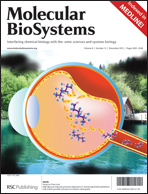Denture stomatitis (DS) is the most common oral pathology among denture wearers, affecting over one-third of this group. DS is usually associated with C. albicans. However, unlike other oral candidiasis, most DS patients have intact host immunity. The presence of a denture alone is usually sufficient for DS. Saliva and its protein contents can theoretically predispose some denture wearers to DS and others resistant toward DS. Here we proposed for the first time to define salivary proteomic profiles of denture wearers with and without DS. SELDI-TOF/MS analysis suggests that there is a proteomic differentiation among control, localized and generalized DS. Based on initial SELDI-TOF/MS profiling, we further used reversed phase liquid chromatography, MALDI-TOF/MS, and LC-MS/MS to characterize the salivary proteins associated with DS. Nineteen proteins based on SELDI-TOF/MS profiling were found including cystatin-SN, statherin, kininogen-1, desmocollin-2, carbonic anhydrase-6, peptidyl-prolyl cis–trans isomerase A like peptides, cystatin C, and several immunoglobulin fragments. The proteomic content gives evidence of the interaction between host tissue, saliva, and candida. Further examination in larger populations of these proteins may help to gain a better understanding of DS pathological processes and improve DS treatments.


 Please wait while we load your content...
Please wait while we load your content...